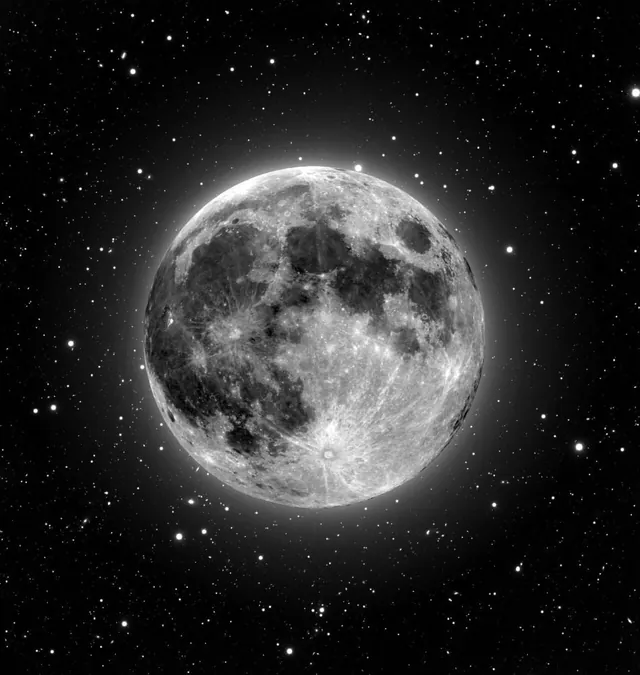
Unlocking the Secrets of Exoplanet Magnetic Fields from the Moon!
2025-08-18
Author: Michael
Are We Close to Finding Life Beyond Earth?
When it comes to exoplanet habitability, liquid water is just the beginning. Key ingredients also include a stable atmosphere, the right chemistry, and geological activity. One of the most critical, yet elusive, elements in this equation is the planetary magnetic field. Fortunately, groundbreaking research suggests we might finally have a way to detect these magnetic fields—by leveraging the unique environment of the Moon!
The Challenge: Earth's Ionosphere
Detecting exoplanet magnetic fields from Earth is no easy task due to our planet's ionosphere, which acts as a barrier—blocking crucial radio frequencies needed for such studies. Experts believe the most promising signals are found below 10 MHz, falling right under this obstructive layer.
Moon: The Ideal Observatory
Enter the Moon, which boasts no ionosphere to hinder radio detection. A recent paper, led by Dr. Jake Turner from Cornell University, illustrates how a radio array on the Moon could provide the perfect tool to study exoplanet magnetic fields. The study is aptly titled "Studying Exoplanets in the Radio from the Moon."
The Science of the Ionosphere and Its Limits
The ionosphere is a complex mix of ions and charged particles, extending from about 48 km above Earth to nearly 965 km. This dynamic region influences radio signal propagation, making it a barrier rather than a facilitator for studying distant worlds.
Eureka Moments in Exoplanet Research
Despite extensive searches, conclusive evidence of an exoplanet's magnetic field remains elusive. However, Turner and his team detected tantalizing hints of a magnetosphere around Tau Bootis b, a fascinating exoplanet located about 51 light-years away. The key lies in auroral emissions, which offer one of the best avenues for detecting exoplanetary magnetic fields through radio waves.
Moon Missions on the Horizon
So, how do we go about this? NASA has proposed innovative lunar missions, notably the Lunar Surface Electromagnetics Experiment (LuSEE-Night), which aims to create a robotic radio telescope on the Moon's far side to avoid Earth's interference. Another effort, ROLSES-1, saw limited success by gathering preliminary data despite its lander tipping over.
Future Technologies: FarView and FARSIDE
Two ambitious proposals, FarView and FARSIDE, could revolutionize our understanding of exoplanet magnetic fields. FarView plans to utilize 100,000 dipole antennas to analyze radio emissions over 200 square km, while FARSIDE would deploy 128 antennas across 10 square km, imaging the night sky every minute.
A New Era of Astronomy Awaits
These lunar observatories promise to study the magnetic fields of diverse exoplanets, refining our understanding of habitability well beyond liquid water. They will complement other major telescopes, such as JWST, offering a comprehensive view of what makes a planet capable of supporting life.
The Broader Implications of Magnetic Fields
The concept of habitable zones is valuable, but Earth teaches us that a magnetic shield, geological activity, and various other factors also play crucial roles. While pinpointing these activities across light-years remains a challenge, the detection of magnetic fields is tantalizingly within our reach.
In summary, the breakthroughs proposed via FarView and FARSIDE could usher in a new chapter in exoplanetary science and comparative planetology. These missions might finally hold the key to answering the age-old question: Are we alone in the universe?









 Brasil (PT)
Brasil (PT)
 Canada (EN)
Canada (EN)
 Chile (ES)
Chile (ES)
 Česko (CS)
Česko (CS)
 대한민국 (KO)
대한민국 (KO)
 España (ES)
España (ES)
 France (FR)
France (FR)
 Hong Kong (EN)
Hong Kong (EN)
 Italia (IT)
Italia (IT)
 日本 (JA)
日本 (JA)
 Magyarország (HU)
Magyarország (HU)
 Norge (NO)
Norge (NO)
 Polska (PL)
Polska (PL)
 Schweiz (DE)
Schweiz (DE)
 Singapore (EN)
Singapore (EN)
 Sverige (SV)
Sverige (SV)
 Suomi (FI)
Suomi (FI)
 Türkiye (TR)
Türkiye (TR)
 الإمارات العربية المتحدة (AR)
الإمارات العربية المتحدة (AR)